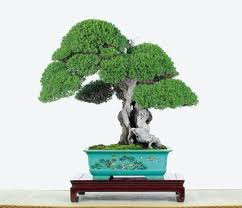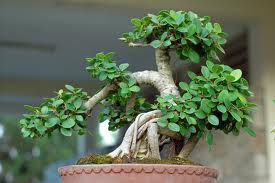5 Steps to Make Palm Bonsai
Step One:
Coconuts are used for Bonsai:
Kelapa Gading Milk
Ivory white coconut milk coconut hybrid species is widely grown in subtropical areas, but usually used as a substitute coconut palm tree garden.
Kelapa Gading Red
Kelapa Gading also red ......
is a hybrid coconut with red color yellowish coconut is very unique and beautiful to be made of palm bonsai, but the processing process must use a lot of fertilizer and other plant vitamins, because coconut red ivory vulnerable will lose (cambium) of green leaf substance, so that if the lack of substance planting, then the red ivory palm trunk will change color to green, and red substances will be lost, so the thing to do is replace the soil medium, fertilizer, and other vitamins.
Coconut Albino (White Silver color)
This is the same type of coconut palm above 2 examples, but many of the coconut bonsai hobys change in order to have a white, silver rod to make it look unique or albino (to turn it into an albino would I explain in the next chapter).
Step Two
Find old coconut seedlings would be better if the coconut is plucked straight from the tree, because seedlings sprout grows older faster but if the seeds have fallen to the ground will result in a form that is less attractive and easy kentosnya fragile due to last fall, would be perfect if coconut which will be made bonsai has kentos (shell) is very small and has a large root, because when viewed from a small kentos will make it easier to form the stem as we want.
Third Step
Coconut who do not yet have buds should be placed in moist soil and contain lots of water, about 1-2 weeks is usually grown coconut shoots. If you want a form which surrounded the root kentos should place the coconut in a standing position (vertical), but if you want a shape like a snail then place the sleeping position (horizontal), the shape of palm position according to your imjinasi.
Fourth Step
Process Plant open coconut fibers that have been sprouting (with height 3-5 cm) using the tip of a spoon or a small dagger slowly and carefully so as not about the roots and should not be interrupted. Clean the small fibers are still attached to the kentos by using a thin knife (Cutter) to make it look clean, if you want to look slick, shiny brown kentos kentos using lighter fuel is slowly / lukewarm. (This process is a bit risky and should be done with caution.) Cut slowly (2-3 strands of buds) buds of the most under / which is old by using a thin knife (Cutter), after planting in pots that have been provided. If you want to palm shoots grow faster should cover shoot with a bottle of mineral water that has been cut in the mouth of the bottle as high as 5 cm. This process is also to avoid the shoots of mealybug pests in the bud.
Step Five
Cutting process. If the coconut is grown as high as 15-20 cm, slice the bottom buds to form the stem did this over and over at least 3 days, in the process of doing panyayatan careful not to graze new shoots that will grow, if it happens then bonsai will experience decay (failure and death). This process is done forever to grow bonsai did not form a regular coconut. Wash plant 1 day once in the afternoon or evening, it's good to flush by using MSG or salt water solution.
Good luck,.!
Coconuts are used for Bonsai:
Kelapa Gading Milk
Ivory white coconut milk coconut hybrid species is widely grown in subtropical areas, but usually used as a substitute coconut palm tree garden.
Kelapa Gading Red
Kelapa Gading also red ......
is a hybrid coconut with red color yellowish coconut is very unique and beautiful to be made of palm bonsai, but the processing process must use a lot of fertilizer and other plant vitamins, because coconut red ivory vulnerable will lose (cambium) of green leaf substance, so that if the lack of substance planting, then the red ivory palm trunk will change color to green, and red substances will be lost, so the thing to do is replace the soil medium, fertilizer, and other vitamins.
Coconut Albino (White Silver color)
This is the same type of coconut palm above 2 examples, but many of the coconut bonsai hobys change in order to have a white, silver rod to make it look unique or albino (to turn it into an albino would I explain in the next chapter).
Step Two
Find old coconut seedlings would be better if the coconut is plucked straight from the tree, because seedlings sprout grows older faster but if the seeds have fallen to the ground will result in a form that is less attractive and easy kentosnya fragile due to last fall, would be perfect if coconut which will be made bonsai has kentos (shell) is very small and has a large root, because when viewed from a small kentos will make it easier to form the stem as we want.
Third Step
Coconut who do not yet have buds should be placed in moist soil and contain lots of water, about 1-2 weeks is usually grown coconut shoots. If you want a form which surrounded the root kentos should place the coconut in a standing position (vertical), but if you want a shape like a snail then place the sleeping position (horizontal), the shape of palm position according to your imjinasi.
Fourth Step
Process Plant open coconut fibers that have been sprouting (with height 3-5 cm) using the tip of a spoon or a small dagger slowly and carefully so as not about the roots and should not be interrupted. Clean the small fibers are still attached to the kentos by using a thin knife (Cutter) to make it look clean, if you want to look slick, shiny brown kentos kentos using lighter fuel is slowly / lukewarm. (This process is a bit risky and should be done with caution.) Cut slowly (2-3 strands of buds) buds of the most under / which is old by using a thin knife (Cutter), after planting in pots that have been provided. If you want to palm shoots grow faster should cover shoot with a bottle of mineral water that has been cut in the mouth of the bottle as high as 5 cm. This process is also to avoid the shoots of mealybug pests in the bud.
Step Five
Cutting process. If the coconut is grown as high as 15-20 cm, slice the bottom buds to form the stem did this over and over at least 3 days, in the process of doing panyayatan careful not to graze new shoots that will grow, if it happens then bonsai will experience decay (failure and death). This process is done forever to grow bonsai did not form a regular coconut. Wash plant 1 day once in the afternoon or evening, it's good to flush by using MSG or salt water solution.
Good luck,.!















 Image
Image
























